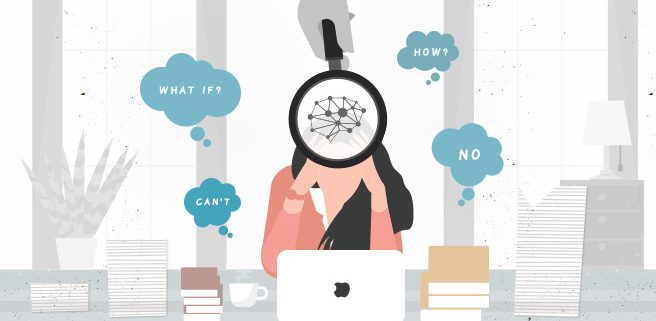Why Quitting Isn’t Such A Bad Thing
If we tell our colleagues that if we are unhappy with our current job, we should quit.
And though we admit just how badly we want to walk away, the idea actually terrifies us. The act elicits deeply rooted fears and anxieties within us. So instead of facing them, we cozy up back to our comfort zones – no matter how unhappy we actually are.
“Winners never quit and quitters never win”
This is the belief we grew accustomed to, shaping us to think that we shouldn’t stop while we’re ahead – we need to keep on moving forward. The negative impact it can create to our personal life coaxes us in the idea of staying stagnant. And in return, our brains would coerce us that this is what we want. When in reality, we’re just here for the sake of avoiding change.
Internal factors such as what our loved ones would say and financial insecurities would fog our view of the opportunities quitting can open, chances of growing and improving ourselves that contributes to our personal happiness.
Coauthor of the motivational book Just Start: Take Action, Embrace Uncertainty, Create the Future and preside of Babson College, Leonard Schlesinger, said that a large majority of us are paralyzed by our unhappiness with our current reality.
This same paralysis stops us from taking that leap and keeps us glued to various mundane job. Tech entrepreneur, Daniel Gulati believes that most of us stay too long in professions we hate because the corporate world is geared in keeping people in roles without really considering whether or not an individual matches his or her position.
Simply put, the world doesn’t give us enough freedom to grow and create situations that allows us to thrive and move forward.
Why you still feel ‘stuck’
So you’ve followed all the advice you’ve read from several motivational books but the feeling’s still the same. You still feel stuck and you’re not even really sure why.
If everything still feels the same, chances are it’s because you’re still resisting quitting. Even if it’s pretty obvious that things aren’t working for you anymore, you continue the same routine every day, refusing to prepare for the change walking away could bring.
We’d probably defend ourselves by saying that we’re not really sure what we want right now but this ideology hinders us from discovering the right career for ourselves by just sitting around and thinking about it. If something isn’t working, get up and gather the courage to do something about it.
The second we pick ourselves up and put ourselves into this kind of headspace, true breakthroughs will happen.
People who refuse to acknowledge their unhappy situations and continue to do the same thing day in and day out without ever finding real meaning in what they do, will never flourish – no matter how hard they work.
Quitting is okay
The fact remains, quitting carries a negative connotation – that is, when it means fleeing away from challenges and responsibilities – but in certain cases, it’s a necessary step towards the path of success. It all boils down to acceptance rather than fear.
Sometimes, it becomes exactly what we need in order for us to know what’s best for us – something that will be hard to find when doing the same thing over and over again. Don’t view quitting as a sign of failure, see it as a chance to find what you’re really set out to do in this world.
Statistically speaking, a large majority of today’s labor force are walking away from their 9-to-5 work and corporate roles to join the growing population of digital nomads – freelancers and remote workers cooped up in coworking spaces pursuing their dream jobs. These communities typically found within shared offices encourage young professionals to be brave, to not fear quitting and follow the path less traveled.
Its true magic reveals itself in the sense of urgency that follows, the same feeling that opens up a space for you to find what really matters.
Changing one’s perception isn’t easy, and that’s the truth. But ask yourself what truly makes you happy. What’s the one thing you can’t stop thinking about?
Deep down, we know what would really make us happy but fear is the only thing that’s stopping us from achieving this. Quitting is necessary when something no longer makes us happy or pushes us to grow.
View it as a chance to win at life and in any case that you still need some help, talk to us today.





















